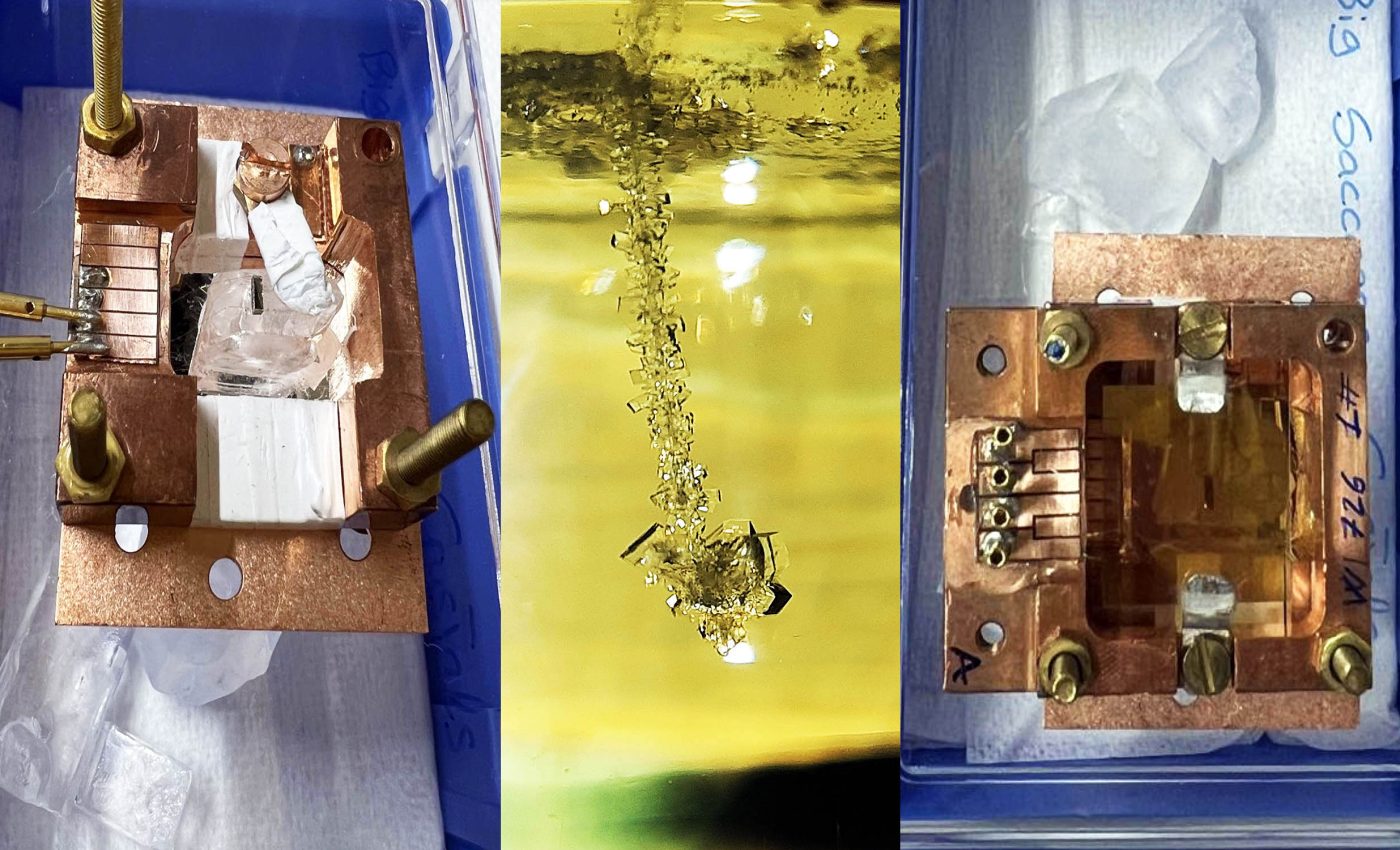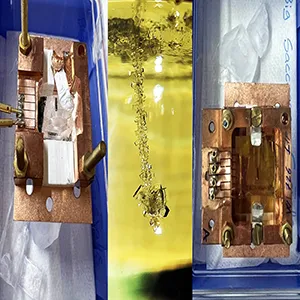
SWEET project tests sugar crystals as potential dark matter detectors
Physicists in Munich chilled a sugar crystal to about 0.007 Kelvin above absolute zero, then used it to search for dark matter. The project, called SWEET, is a small step toward catching particles far lighter than traditional candidates. It comes from a team at the Max Planck Institute for Physics.
The experiment is led by Federica Petricca from the Max Planck Institute for Physics in Munich (MPP). Her group grows large sucrose crystals and reads out tiny signals at extreme cold.
In a new preprint, the team reports the first run with a monocrystalline sugar detector at milliKelvin temperatures. The run lasted 19 hours and yielded clean pulses.
The draw of sucrose is hydrogen. Each molecule carries 22 hydrogen atoms, which suits weakly interacting massive particle (WIMP) searches that favor lighter nuclei for light dark matter.
Hydrogen packed in a solid crystal gives many targets in a small space. Pure hydrogen gas does not, because its density is too low for practical detectors.
Sugar crystals and dark matter
The SWEET dark matter project team grew sugar crystals from a warm, concentrated solution, then cooled them slowly to yield clean facets. One selected crystal weighed about 0.96 grams, about 0.03 ounces.
To sense heat, the crystal used a neutron transmutation doped germanium thermistor (NTD), a resistor tuned by neutrons to track heat changes. It was glued gently to the crystal to keep good thermal contact.
Slow growth reduces defects that would swallow tiny heat signals. Smooth faces also make it easier to couple the crystal to the sensors without adding stress.
The entire module was placed in a cryogenic refrigerator with a base temperature near 0.007 Kelvin. That chill slows vibrations and lets tiny heat rises stand out.
Colder operation also reduces random thermal motion that can look like signal. The aim is simple, keep everything quiet enough that a small kick becomes visible.
Detecting dark matter with sugar
A heat signal is carried by phonons, quantized vibrations that spread through a crystal after an interaction. The readout digitized the pulses at 50,000 samples per second for later filtering.
An optical wafer above the crystal monitored scintillation, light flashes emitted when particles deposit energy. A separate sensor measured those photons to cross check any heat spike.
They also observed coincident heat and light in higher energy events. Those signatures indicate the sugar emits some light, which can help separate signals from background.
Because raw noise can mimic weak pulses, analysts use an optimum filter, a digital recipe that boosts signal to noise for a known pulse shape. That tool finds candidate events reliably at low amplitudes.
In this first run, the trigger was set above power line noise peaks to avoid false alarms. Future electronics can shrink that floor so lighter recoils do not slip away.
Searching lighter particles
Years of careful xenon runs have returned no WIMP signals across the heavier mass range. Recent results from the LZ experiment again set the strongest limits without a detection.
That history pushes detectors toward lighter masses, where hydrogen rich targets can shine. The CRESST program built many of the key cold crystal tools used in this approach.
Light nuclei recoil more when struck by light WIMPs, boosting the odds of a measurable signal. Sugar adds carbon and oxygen nuclei too, widening the possible mass window.
“That way the detectors are protected against the ubiquitous cosmic rays,” said Federica Petricca, from the Max Planck Institute for Physics in Munich, explaining the value of deep underground labs in an interview.
Exploring dark matter physics
Hydrogen carries an unpaired proton, which is important for spin dependent, an interaction that depends on the alignment of particle and nucleus spins, searches. That channel is hard to reach with heavy elements like xenon.
The team also compares expected reach using a standard halo model, a simple description of the Milky Way’s dark matter speeds, to estimate event rates. It sets a baseline so results from different targets can be compared.
A successful sugar detector could therefore probe masses well below a billion electron volts. That is the space where light WIMPs would hide from classic heavy target experiments.

Fixing experiment issues
Organic crystals must fight radiocarbon, trace carbon 14 atoms that can mimic tiny signals. Experiments with liquid scintillator showed how hard that isotope is to suppress.
Sugar crystals also have lower density than common detector media, so gamma rays can pass through without dumping their full energy. That complicates calibration and modeling of the energy scale.
The first SWEET run used about 19 hours of data with an analysis threshold set above line noise. Researchers saw normal looking pulses but no low amplitude events that would match very light WIMPs.
The team plans larger, cleaner crystals and new sensors. A transition edge sensor, a superconducting thermometer that changes resistance sharply at a critical temperature, would lower the energy threshold.
Dark matter, sugar, and future study
Two upgrades stand out, larger crystals to catch more energy, and sharper thermometers to hear smaller clicks. If both arrive, the next campaign could challenge leading light mass limits.
The sugar idea will stand or fall on whether it provides the lowest practical thresholds for light WIMPs. If it does, it could carve out a niche at the very low mass frontier.
Even a null result matters because it trims the allowed space for dark matter models. The work adds a fresh target to the toolbox, one that pairs low cost materials with proven cryogenic tricks.
The study is published in arXiv.
—–
Like what you read? Subscribe to our newsletter for engaging articles, exclusive content, and the latest updates.
Check us out on EarthSnap, a free app brought to you by Eric Ralls and Earth.com.
—–













